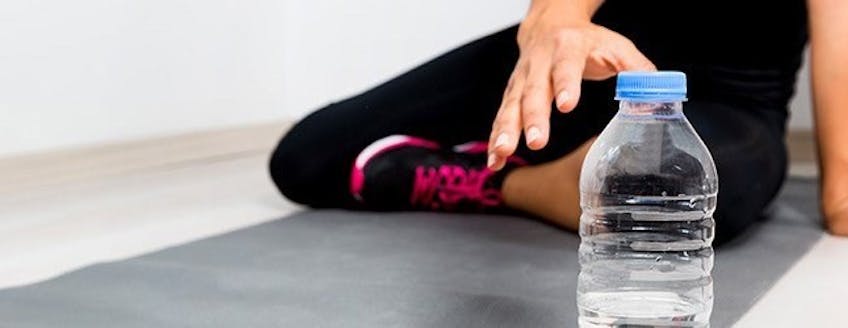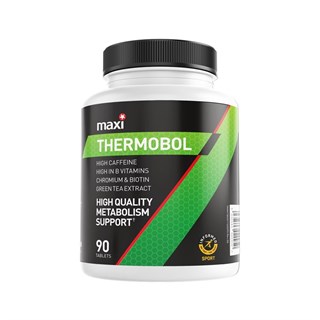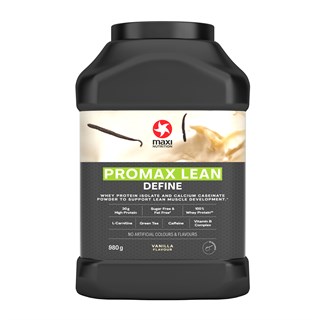It's important to ensure you stay well hydrated during exercise
Keeping hydrated throughout the day is imperative for our health. When we throw exercise into the mix, we lose a lot more water via sweat. Make sure you're optimally hydrated and ready for your workout by following the simple steps below:
Pre-exercise
Aim to start your workout in a hydrated state, otherwise you will be playing hydration catch up as you lose more fluid via sweat as you exercise. Drink 5 – 7 ml per kilogram of body weight before exercise, e.g. 80 kg individual: 80 x 5 ml = 400 ml. About 3 – 4 hours before your workout use the pee chart below as a guide to monitor your hydration status. If you are dehydrated, sip fluids little and often until your pee colour returns to a light straw colour.
During exercise
The amount of fluid that is lost via sweat during exercise is completely individual, therefore there is no one size fits all amount of fluid to drink during exercise. By calculating your individual sweat rate by using the equation below, you will gain a good idea of how much to drink per hour of exercise.
Drink periodically during exercise, or when opportunities allow if you are playing a match. Fluid loss also depends on a number of factors including exercise intensity, body weight, and external temperatures amongst others. Increase your fluid intake if you're working out at a high intensity or in temperate conditions.
Ever wondered why your lips taste bitter during and after a workout? Salts, or electrolytes, are lost in our sweat, and must be replaced. Electrolytes allow our bodies to optimise our ability to absorb the water we drink, and they are also important for muscle and organ function. These salts aso keep us thirsty, reminding us to keep our fluid intake up, and therefore stay hydrated. During high intensity exercise which lasts for 1 hour or longer, inducing high sweat rates, drink fluids with added electrolytes such as commercially avalibale sports drinks to aid hydration.
Post workout
Replenish your hydration needs by drinking 100 % of the fluid lost through sweating during exercise (use the calculator below). If you performed particularly long duration exercise in warmer conditions consume up to 150 % of the fluid lost during sweat.
Electrolytes lost during exercise can be replenished by consuming non-fluid sources such as salty snacks or a main meal.
Remember that too much hydration in sport can lead to adverse effects. It has been shown that excessive consumption of non-salty fluids, well beyond your individual requirements, can cause serious health implications by diluting your natural salt levels. However, for the most part this is seen in amateur marathon runners. The moral of the story is to gain an idea of how much you sweat during exercise, and aim to replace this fluid loss by drinking little and often throughout the day.
What to drink?
With so many thirst quenching options, water doesn’t always have to be the drink of choice for fluid replacement. Many drinks including milk and fruit juices count towards your fluid intake requirements, and they also provide the added bonus of being a source of essential nutrients and calories. Contrary to popular belief, although large amounts of caffeinated drinks such as tea, coffee and caffeinated are considered diuretics, meaning they increase urinary output, a moderate intake (about 4 cups per day) of these drinks can be used to replenish fluid losses. Try to limit the amount of sugar you pop in your tea and coffee, and choose low sugar drinks as oral health can be compromised with too much of the sweet stuff.
Top tips:
Chill your drinks - Studies have shown that people drink more if their drinks are cooled, therefore replacing more of the fluid that has been lost during exercise.
Taste - Choose to rehydrate with drinks you enjoy drinking. You are far more likely to drink more, and therefore recover, if you like what you are drinking.
What's your status?
So how do we know if we are hydrated? By checking urine colour and monitoring your changes in body weight, you can ensure you are on top of your fluid needs.
Pee chart
Your urine colour will give you a good indication of how hydrated you are. Refer to the colour chart throughout the day, and aim for a urine colour of pale yellow or straw. If your pee is darker, this suggests you are not hydrated and therefore you need to take on board some fluids.
Pre and post weighing
In order to ensure you recover your hydration status after exercise, and as sweating is remarkably individual, we recommend calculating your individual sweat rate per hour of exercise. This will then give you a better idea of how much fluid you need to drink during your workouts to stay on top of your hydration. Follow the simple steps and calculations below.
Sweat loss = (body weight before exercise – body weight after exercise) + amount of fluid intake during exercise
Sweat loss:
- Subtract post exercise body weight in kilograms (kg) from pre exercise weight
- Convert kg to grams (g)
- Add the amount of fluid in milligrams ingested during exercise, to the grams of sweat lost
For example: If an individual was 82 kg before training, 80 kg post training, and drank 500 ml water during exercise his sweat loss would be:
82 kg – 80 kg = 2 kg lost
2 x 1000 = 2000 g
2000 g + 500 ml = 2500 g
Fluid replacement:
- Convert the amount of sweat lost (g), to the amount of fluid you need to drink to rehydrate(ml) (1000 g of weight loss = 1000 ml of sweat loss)
- Drink 100 -150 % of what was lost. If exercise intensity was high and sweat loss was substantial, 150 % replenishment would be adequate, if not, 100 % would be sufficient.
The same individual needs to drink the following to hydrate:
2500g = 2500ml
2500 X 1.5 = 3750 ml
Therefore the consumption of an upper requirement of nearly 4 litres of water (if he was partaking in high intensity, long duration exercise in the heat), would be necessary post exercise to replenish hydration status.
HYDRATION TESTING AT THE HUMAN PERFORMANCE LAB
Many top athletes train twice or even three times per day, and therefore need to pay close attention to their hydration status. Previously at the Human Performance Lab (HPL), hydration testing is a core capability. Athletes are provided with an individualised hydration report, including sweat rate and composition to support their training and competitive performance. The HPL assesses sweat composition by applying patches to the athlete’s body that absorb sweat during exercise. Once the sweat is extracted from the patch it can be analysed for electrolytes, such as sodium and potassium, lost by the athlete. The HPL also measure pre hydration status; a urine sample is collected and then the concentration is measured, the higher the concentration the more dehydrated the athlete is. This is used as an education tool for athletes to help ensure they monitor their hydration status throughout the day.
Making sure you’re well hydrated throughout the day is important to health, well being and the ability to continue exercising. So it all boils down to this:
- Start your workout in a hydrated state.
- Work out your individual sweat losses during exercise, drinking up to 150 % of what you lost if you’ve exercised at a high intensity in warm conditions.
- Monitor your hydration throughout the day.


















